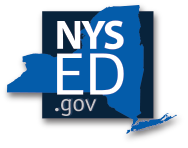NYS Learning Standards for World Languages
The New York State Learning Standards for World Languages are divided into two language groups: Modern Languages and Classical Languages. Modern languages include any language that has living, native speakers. Modern languages are contrasted with Classical languages, which include Latin, ancient Greek, ancient Hebrew, and other languages from earlier time periods in human history. These updated learning standards for both Modern and Classical Languages are organized into two anchor standards: Communication and Cultures. The Communication Anchor Standard for all languages is broken down into three Standards—one for each mode of communication (Interpretive, Interpersonal, Presentational). The Cultures Anchor Standard is broken down into two Standards: the Relating Cultural Practices and Products to Perspectives standard and the Cultural Comparisons standard.
The standards document is available in two formats: Word document and PDF.
Unlike the standards of other disciplines, the NYS Learning Standards for World Languages are not grade-banded, but instead are grouped into three proficiency ranges that correspond to the World Language Checkpoints (A, B, C) that reflect levels of achievement students must reach, generally over the course of two years of study each. Students meet the standards by demonstrating proficiency at the levels consistent with the lower end of the range for each Checkpoint. This demonstration of proficiency generally occurs by the end of 8th grade for Checkpoint A, by the end of 10th grade for Checkpoint B, and by the end of 12th grade for Checkpoint C. These proficiency ranges are listed in the performance indicators for each language category.
For more information on these standards, see the following documents:
Webpage last updated on August 10, 2025






